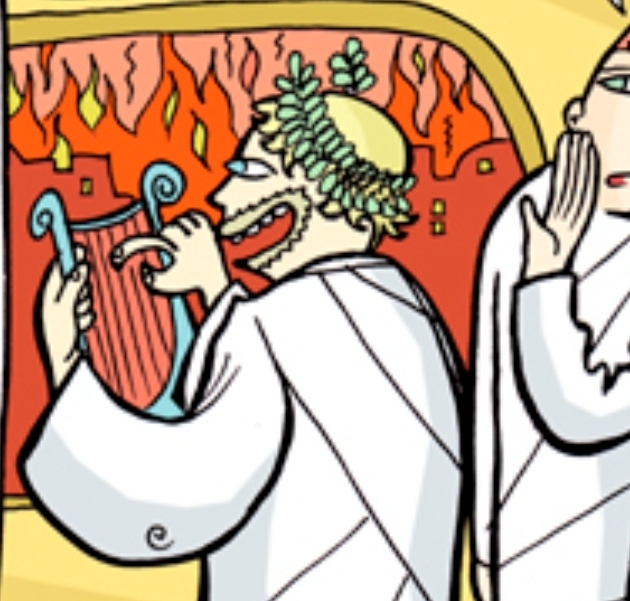I’ll be DMing some more 5e soon and I want to take the opportunity to try some different ways of playing (I’ll post my own suggestions as comments so they can start their own discussion threads). What alternate rules have you tried that you thought worked well? They can be larger changes to the game or little QoL tweaks (though if you can respond to the suggestion with “at this point just play [different game] instead” then that’s probably more than what I’m looking for!)
This one’s short and sweet. At level 4 PCs get the Score Improvement AND to pick a Feat. This has propagated throughout my whole group, but the original DM that started it reasoned "I think a lot of Feats are really cool, but a lot of people aren’t comfortable passing on their first Score Improvement to pick up something situational. So they get a freebie, because I want to see what uses they come up with.
I’ve seen a variant of this where everyone gets a free feat at level 1
This reminds me, I do something kinda similar. At ASI levels I give out a +1 and a feat, instead of the usual +2 or a feat. I agree that it’s more fun to let people take feats instead of feeling obligated to pick the ASI!
This might be in the 5e DMG and I’m just forgetting, but I’m a big fan of the 10 minute exploration turn while the party goes through dungeons. I find that it helps things move faster and helps players feel like they’re getting enough time in the spotlight during the exploration phase. Rather than figuring out how far they can move in 10 minutes, I just allow characters either to move into an adjacent room (provided there is an unblocked passage to do so) or an action inside of the room. Actions in the room take the whole 10 minutes, but I usually let it slide if a player wants to perform a short sequence of actions to achieve a single result, the whole sequence getting represented by one roll if necessary.
To streamline combat, I have ported over minions from 4e (Matt Colville and I actually converged on this, I had been doing it since I switched to 5e and didn’t find his video on it for years) and a modified version of the coup de grace rules. Minions are monsters with full stats and attacks but they die in a single hit, no matter how much damage they were dealt. For the modified coup de grace, if a player character deals half or more of a monsters HP in a single hit, even during normal combat, that monster dies immediately. Anything that gets the monsters off the field before they get boring really, since it allows me to throw out large waves of enemies that only take a few minutes to fight since many of them go down in one hit. I run a fairly heroic game of d&d so letting the players plow through enemies helps create the vibe I want during the game.
Do you use CR calculations to build your encounters, and if so how much is a minion worth?
I do not use CR to build encounters, and I use milestone experience, but in 4e, a minion was usually worth 1/4 to 1/2 the experience of a monster with equivalent stats.
Cheers, the actual XP is less of a concern, I’m more concerned that I throw the right number of them at the players to be challenging without being fatal!
I found long ago that trying to balance my 5E encounters in any way, shape, or form is just a hopeless endeavor.
I just throw things at my party and kind of let 'er rip. Some end up hard, some end up easy, after a while you get a general gist for what they tend to be able to handle.
I try to keep house rules to a minimum. My biggest one is a change to inspiration. Inspiration is a reroll and you need to keep the new result. You can have multiple inspirations (max 3) and you start each session with one for free. If you end the session with more than one, then you can take one extra inspiration with you to the next session
As PC’s progress, falling to 0HP in combat gets less and less meaningful. So I have used a rule that whenever a PC is at 0HP at the end of their turn, OR fail a death save, they take a level of exhaustion. It makes the 0HP yo-yo more dangerous, and makes it so “death” has some longer term consequences.
My group uses this, but with a separate temporary exhaustion (we call it Trauma) that goes away on a short rest. Still handily serves the purpose of discouraging yoyoing without being too punitive.
The only reason this is a “house rule/variant” is because everybody allows the optional rules by default and doesn’t understand what “optional” or “check with your DM first” means.
I don’t allow multi-classing. Subclasses do it better and are actually balanced. When I don’t disallows multi-classing I get 1-3 hexblade dips every group because of how OP the dip is.
I’ve had a ton of Paladin/hexblades, more than a few Wizard (Bladesinger)/hexblades, and even a rogue/hexblade with a fucking double-scimitar.
I’m sick to death of hexblades.
Fuck hexblades. No more multiclassing in my games. Assholes abused it so much it’s no longer an option because I like my hair where it is, and the alternative is for me to quit DMing altogether.
…and nobody else seems willing to run the fucking game…
Seems a bit overkill to ban all multiclassing when all you really want to ban is hexblade dips! I think you really just need to ban munchkins from your table ;)
Why not try a different system?


